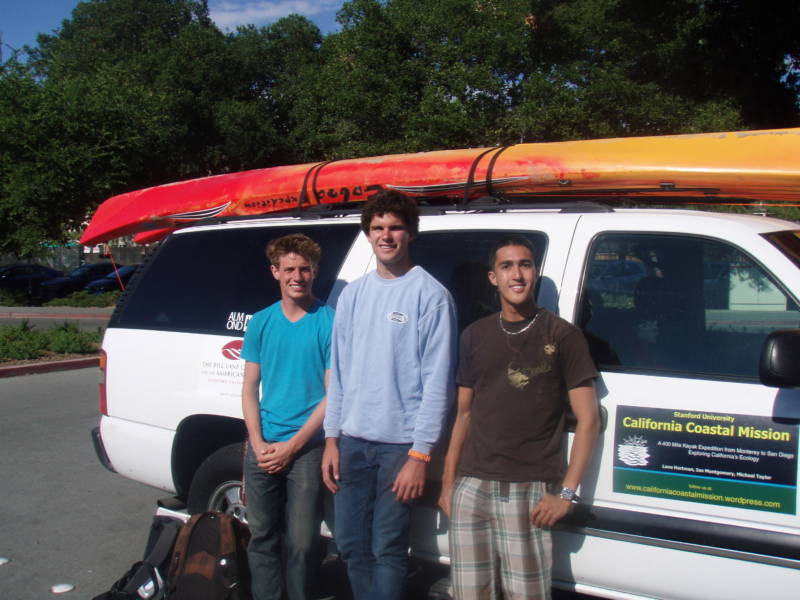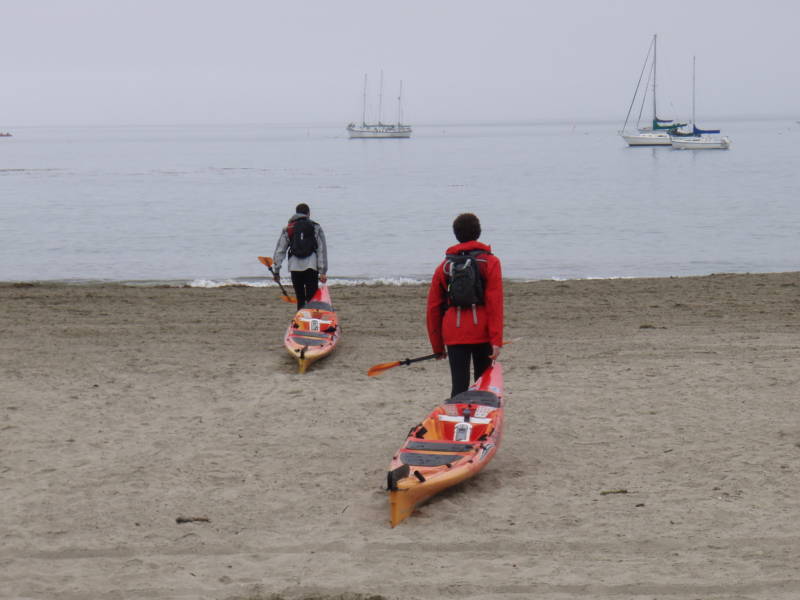
Three Stanford students are starting a summer trip down the California coast today. They’ll be enjoying the views and the ocean breeze, but not from a convertible cruising down Highway 1. They’re kayaking from Monterey to San Diego. It’s going to take 2 months.
“If we walked we could go faster,” says Ian Montgomery, a sophomore Earth Systems major. He’s making the 400-mile trip with Lane Hartman and Michael Taylor. The three are united by, as they explain on their blog, a “love for surfing and great bodies of water” (Montgomery is from Southern California, Hartman and Taylor are from Michigan and the Marshall Islands, respectively).
Montgomery expects the slow pace (about 10 miles a day) and the sheer novelty of the expedition will provide opportunities to talk to locals about changes they’ve seen along the coast. The students will stop along the way to talk to ecologists, representatives from environmental groups, fishermen, and coast residents.

The intertidal zone is an interesting place to study climate change, explains Montgomery, because there are so many variables: air temperature, water temperature, tidal action, and human impacts.
As the students travel they won’t just be collecting anecdotal evidence. They’ll take note of what animals they see in the water and also take pictures of the intertidal zone as they go along. By photographing a 25 centimeter by 25 centimeter square a day, they’ll create a series of snapshots of what lives where on the California coast.
They’ll be able to compare their findings with research from last century done by marine biologist–and friend of John Steinbeck’s–Ed Ricketts. Montgomery unearthed Ricketts’s records of what species lived in the intertidal zone in Monterey in the ’20s and ’30s (some of the records are singed on the edges, survivors of a fire that tore through Ricketts’s lab in the 1930s). Montgomery suspects they’ll find that species have moved since then, pressed north by warmer temperatures. He already knows some have, like the tube snail (serpulorbis squamigerus), a species that was once limited to Southern California, but is now common in Monterey Bay.
You can follow their progress and see pictures from the trip on the students’ blog.
2 thoughts on “Paddling the Coast for Climate Clues”
Comments are closed.

I am fascinated by this adventure. My parents were friends of John Steinbeck and Ed Rickets. I remember being in Ed’s lab as a kid and being bored with all those specimens while our parents sat around drinking wine. My father was very disappointed not to be invited on the Sea of Cortez. Anyway—I would like to hear more about your marvelous trip down the coast.
That must have been quite an experience to get to spend time in Ricketts’s lab as a kid (bored or not). The Stanford students have been updating their blog, you can see more pictures there: http://californiacoastalmission.wordpress.com/.